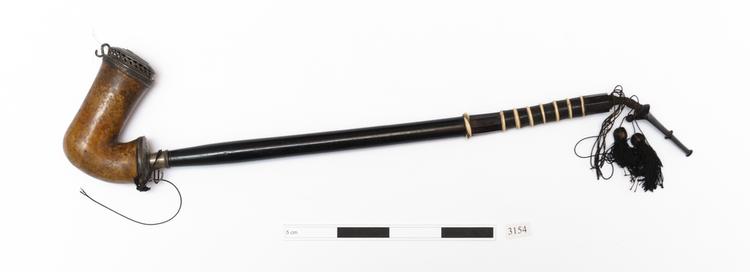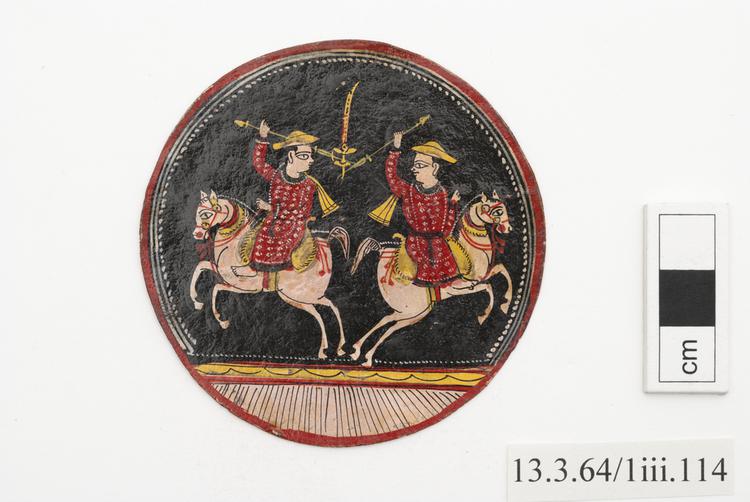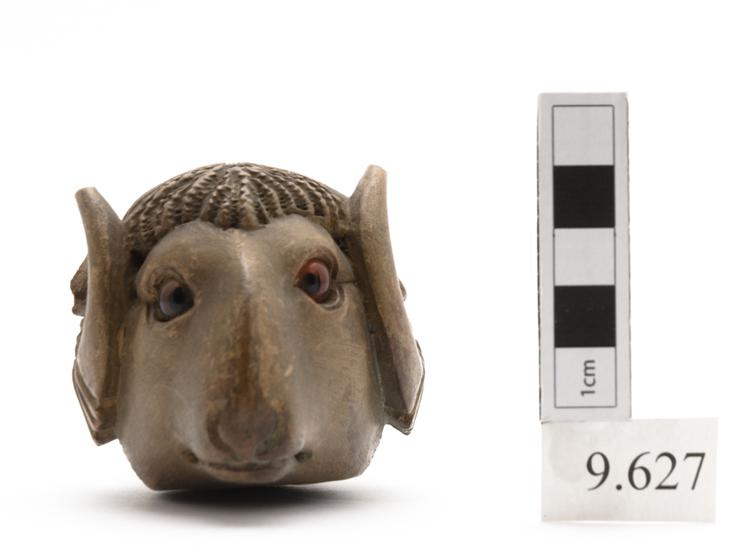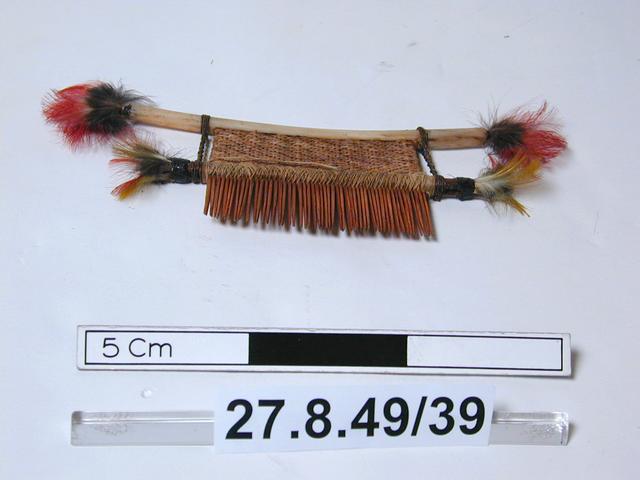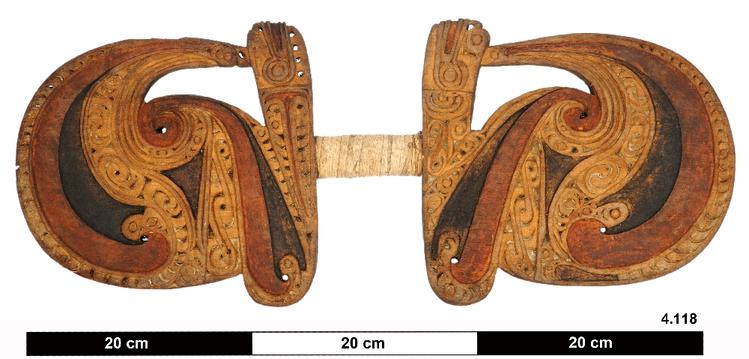
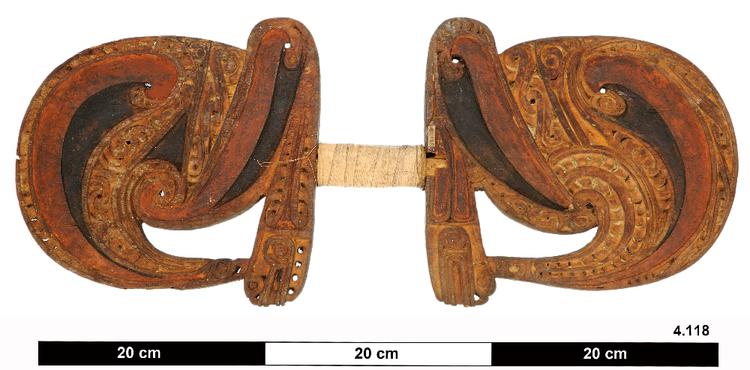
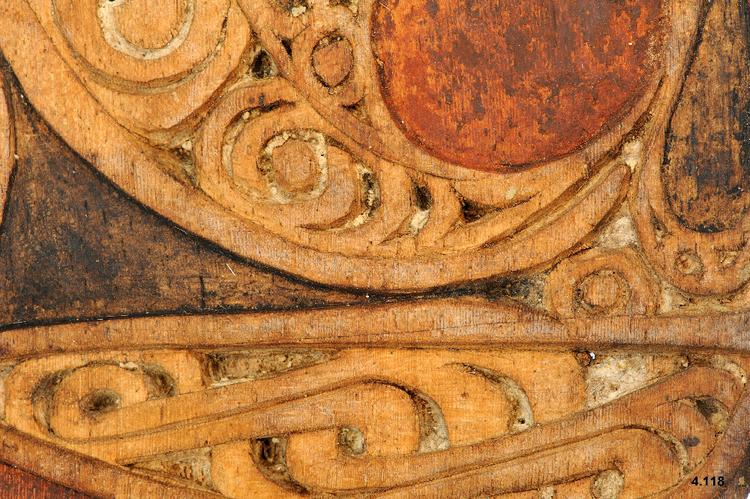
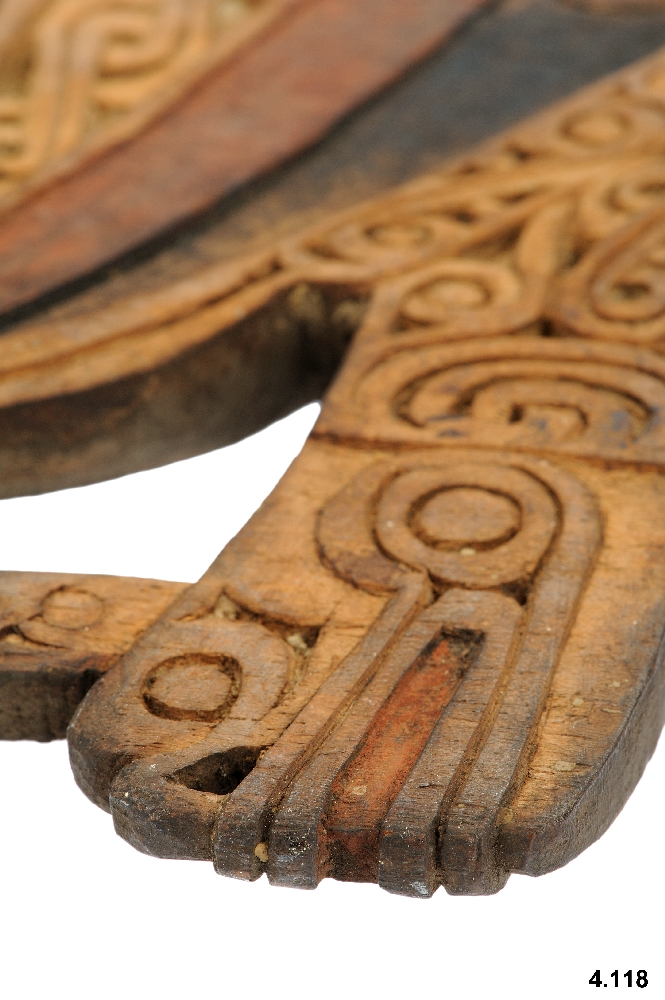
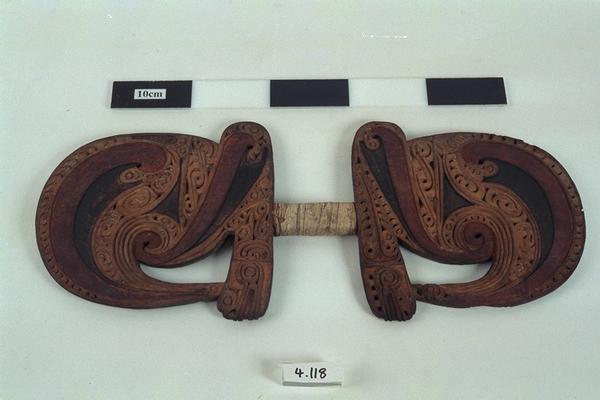
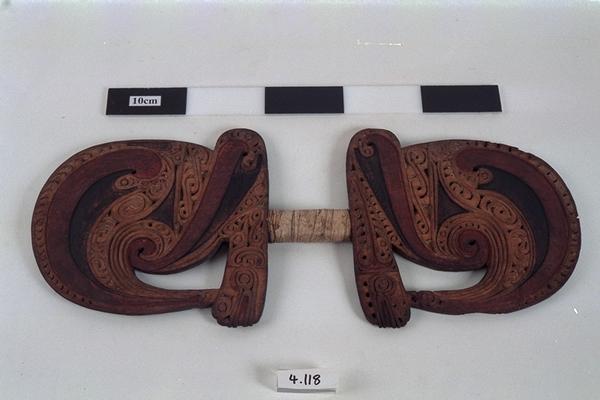
Carved Dancing shield from a single piece of wood with a narrow central handle between opposing boards of elongated D shape. Each board is shallowly incised with curvilinear motifs embodying a mixture of crocodile, hornbill and snake elements. The whole is painted in red, white and black and the handle is bound with strips of pandanus leaf.
Dance Paddle, Kaydiba, Trobriand Islands, Massim, Papua New Guinea. The Kaydiba was a shield-like paddle used by male dancers as props to emphasise their movements in the energetic dances of the same name. In traditional Trobriand’s life, there was a dancing season called milamila, which lasted three months. The kaydiba dance was a central element of the milamila season, and one the women looked forward to. In this dance, young men wore loincloths and elaborate cockatoo feather headdresses, and with their kaydiba paddles in their right hands, they danced around the singers and drummers. The kaydiba was an important opportunity for men to display their beauty to the watching women, who often went to watch the kaydiba with the aim of finding a husband. The form of kaydiba is symmetrical across the handle, and involves a complex composition of scrolls and stylised animal motifs. Sometimes these animals are easily recognisable (hornbills, ospreys and snakes, for example), although just as often they are mythical beasts which embody particular personal qualities and magical attributes. Wood, mineral pigment. Late 19th Century. Formerly in the private collection of Mr. W.D. Webster.



